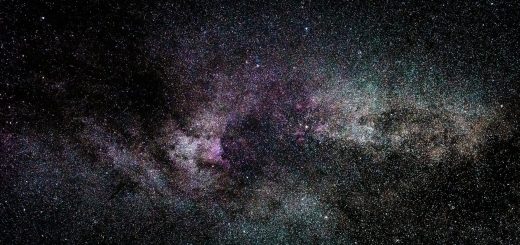Dragons and Wyverns: Fire-Breathing Creatures of Myth

Hey there, amazing readers! 🖐️ Just a quick note: yes, we know there are a lot of ads here. Trust us, we get it—it’s not the prettiest look, but they help us keep this blog alive and kicking. Those pesky little ads cover the costs of all the behind-the-scenes magic, from hosting and tech stuff to creating content we hope you’ll love.
We’re committed to delivering quality posts, and your support (even just sticking around despite the ads) means everything to us. So, bear with us, and thanks for helping us keep the good vibes rolling. Now, on to the fun stuff! 😉
TRANSLATE BUTTON AT THE END OF THE ARTICLE
Introduction to Dragons and Wyverns
Dragons and wyverns are iconic fire-breathing creatures of myth that have captured the imagination of people for centuries.
These mythical beasts are often depicted as powerful, reptilian creatures with the ability to breathe fire and fly.
While dragons are known for their intelligence and often appear as wise beings in mythology, wyverns are typically portrayed as more animalistic and aggressive.
Both creatures have played significant roles in various cultures, legends, and folklore throughout history, adding an element of mystery and wonder to the stories they inhabit.
Origins and History of Fire-Breathing Creatures
The origins of dragons and wyverns can be traced back to ancient civilizations such as Mesopotamia, Egypt, and Greece.
In these early cultures, these creatures were often seen as symbols of power, strength, and wisdom.
The concept of fire-breathing dragons may have been inspired by natural phenomena such as volcanic eruptions or the fiery breath of certain animals.
As these myths and legends spread to other parts of the world, dragons and wyverns took on different characteristics and roles, becoming integral to the folklore of many societies.
Physical Characteristics of Dragons and Wyverns
Dragons are typically depicted as large, winged creatures with scales covering their bodies, sharp claws, and a long, serpentine tail.
They often have horns on their heads and are known for their ability to breathe fire.
Wyverns, on the other hand, are smaller than dragons and have only two legs, with their wings serving as their front limbs.
They also have a barbed tail, which they use as a weapon in addition to their fiery breath.
Both dragons and wyverns are usually portrayed with reptilian features and a fearsome appearance.
Cultural Significance in Mythology and Folklore
Dragons and wyverns have played important roles in the mythology and folklore of many cultures around the world.
In Chinese culture, dragons are revered as symbols of power, prosperity, and good fortune, often associated with the emperor.
In European folklore, dragons are often depicted as dangerous creatures that hoard treasure and must be defeated by brave heroes.
Wyverns are also prevalent in European folklore, where they are seen as symbols of war and destruction.
These creatures have become ingrained in popular culture, appearing in books, movies, and games.
Differences Between Dragons and Wyverns
While dragons and wyverns share many similarities, there are some key differences between the two creatures.
Dragons typically have four legs and two wings, while wyverns have two legs and two wings.
Dragons are often depicted as highly intelligent beings capable of speech and magic, while wyverns are portrayed as more animalistic and instinctual.
Additionally, dragons are usually associated with wisdom and protection, whereas wyverns are often seen as symbols of chaos and destruction.
These distinctions have influenced how these creatures are portrayed in various myths and legends.
The Role of Dragons and Wyverns in Literature
Dragons and wyverns have been featured in countless works of literature throughout history, from ancient myths and legends to modern fantasy novels.
These creatures often serve as powerful adversaries or allies to the protagonists of these stories, adding an element of danger and excitement to the plot.
Authors use dragons and wyverns to explore themes of power, courage, and the battle between good and evil.
These mythical creatures have become iconic symbols in literature, captivating readers with their majestic and fearsome presence.
Legends and Tales Featuring Fire-Breathing Creatures
Many cultures around the world have legends and tales featuring dragons and wyverns as central characters.
In Western mythology, dragons are often depicted as monstrous creatures that must be slain by brave knights or heroes.
In Eastern mythology, dragons are seen as benevolent beings that bring rain and prosperity to the land.
Wyverns are often portrayed as fierce beasts that terrorize villages and must be defeated by cunning warriors.
These stories have been passed down through generations, shaping the beliefs and traditions of different societies.
Common Traits and Abilities of Dragons and Wyverns
Dragons and wyverns share several common traits and abilities that have become synonymous with these mythical creatures.
Some of these include:
Fire-breathing: Both dragons and wyverns are known for their ability to breathe fire, which they use as a weapon.
Flight: These creatures are often depicted as being able to fly using their wings, soaring through the skies with grace and power.
Strength: Dragons and wyverns are portrayed as incredibly strong beings, capable of overpowering their enemies with ease.
Intelligence: Dragons, in particular, are often depicted as highly intelligent creatures with knowledge of magic and ancient wisdom.
Depictions of Dragons and Wyverns in Art
Throughout history, dragons and wyverns have been popular subjects in art, appearing in paintings, sculptures, tapestries, and other forms of visual media.
Artists have depicted these creatures in a variety of styles, from the fearsome dragons of European mythology to the more benevolent dragons of Eastern traditions.
Dragons and wyverns have been used to symbolize power, protection, and the eternal struggle between light and darkness.
These depictions have contributed to the enduring popularity of these mythical creatures in art and culture.
Modern Interpretations and Pop Culture References
In modern times, dragons and wyverns continue to be popular figures in popular culture, appearing in movies, television shows, video games, and other forms of media.
These creatures are often portrayed as majestic and awe-inspiring beings with incredible powers and abilities.
From the fearsome dragons of "Game of Thrones" to the friendly dragon Toothless in "How to Train Your Dragon," these mythical creatures have captured the hearts and imaginations of audiences around the world.
Their enduring popularity speaks to the timeless appeal of dragons and wyverns as symbols of power, mystery, and magic.
Beliefs and Superstitions Surrounding Dragons
Throughout history, dragons have been associated with both fear and reverence, with many cultures believing in the existence of these mythical creatures.
In some societies, dragons are seen as malevolent beings that bring destruction and chaos, while in others, they are revered as protectors and symbols of wisdom.
Superstitions surrounding dragons have persisted for centuries, with some people believing that encountering a dragon is a sign of impending doom or great fortune.
These beliefs have shaped the way dragons are viewed in different cultures, adding to their mystique and allure.
Conservation Efforts for Mythical Creatures
While dragons and wyverns may only exist in myth and legend, efforts to preserve the stories and traditions surrounding these creatures are ongoing.
Organizations dedicated to the study and preservation of folklore and mythology work to ensure that the tales of dragons and wyverns are passed down to future generations.
By documenting and sharing these stories, researchers and enthusiasts help keep the spirit of these mythical creatures alive.
Conservation efforts for mythical creatures serve to safeguard cultural heritage and promote an appreciation for the rich tapestry of myths and legends that have shaped societies throughout history.
Conclusion
Dragons and wyverns, as fire-breathing creatures of myth, hold a special place in the hearts and minds of people around the world.
From their origins in ancient civilizations to their enduring presence in modern pop culture, these mythical beasts continue to captivate and inspire.
Whether portrayed as fearsome adversaries or wise allies, dragons and wyverns embody the timeless themes of power, courage, and the eternal battle between light and darkness.
Through their depictions in art, literature, and folklore, these creatures serve as symbols of mystery, magic, and the human imagination.
As we continue to explore the realms of myth and legend, dragons and wyverns will undoubtedly remain at the forefront of our collective imagination.

The Enlightenment Journey is a remarkable collection of writings authored by a distinguished group of experts in the fields of spirituality, new age, and esoteric knowledge.
This anthology features a diverse assembly of well-experienced authors who bring their profound insights and credible perspectives to the forefront.
Each contributor possesses a wealth of knowledge and wisdom, making them authorities in their respective domains.
Together, they offer readers a transformative journey into the realms of spiritual growth, self-discovery, and esoteric enlightenment.
The Enlightenment Journey is a testament to the collective expertise of these luminaries, providing readers with a rich tapestry of ideas and information to illuminate their spiritual path.
Our Diverse Expertise 🌟
While our primary focus is on spirituality and esotericism, we are equally passionate about exploring a wide range of other topics and niches 🌍📚. Our experienced team is dedicated to delivering high-quality, informative content across various subjects ✨.
To ensure we provide the most accurate and valuable insights, we collaborate with trusted experts in their respective domains 🧑🏫👩🏫. This allows us to offer well-rounded perspectives and knowledge to our readers.
Our blog originally focused on spirituality and metaphysics, but we’ve since expanded to cover a wide range of niches. Don’t worry—we continue to publish a lot of articles on spirituality! Frequently visit our blog to explore our diverse content and stay tuned for more insightful reads.







